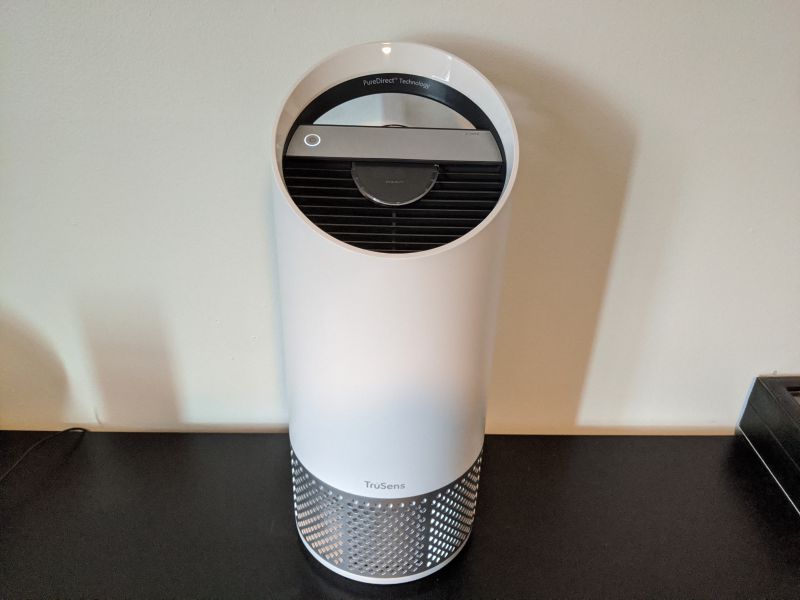
REVIEW – With wildfire season at its peak right now, the air quality in my city of Seattle has declined drastically. With all of that smoke blowing into town, this was the perfect time to review a device specifically designed to help alleviate some of the discomfort caused by the toxic haze, along with my seasonal pollen allergies. Luckily, the TruSens Z-2000 Air Purifier came to my rescue. At $249 it’s definitely priced at the high end of the field, but it does have a few features which help justify the steep price tag.
What is it?
The TruSens Z-2000 is a stylishly designed air purifier boasting 360-degree coverage, a DuPont HEPA Type filter, a UV-C emitting light, and a remote air quality monitor. The Z-2000 is TruSens’ medium-sized unit rated to cover a room of approximately 375 sq. ft. They also offer a smaller version which covers 250 sq. ft. and a larger version which can handle up to 750 sq. ft.

The TruSens Z-2000 arrives safely packed in a sturdy, heavy cardboard box adorned with little more than the company logo.
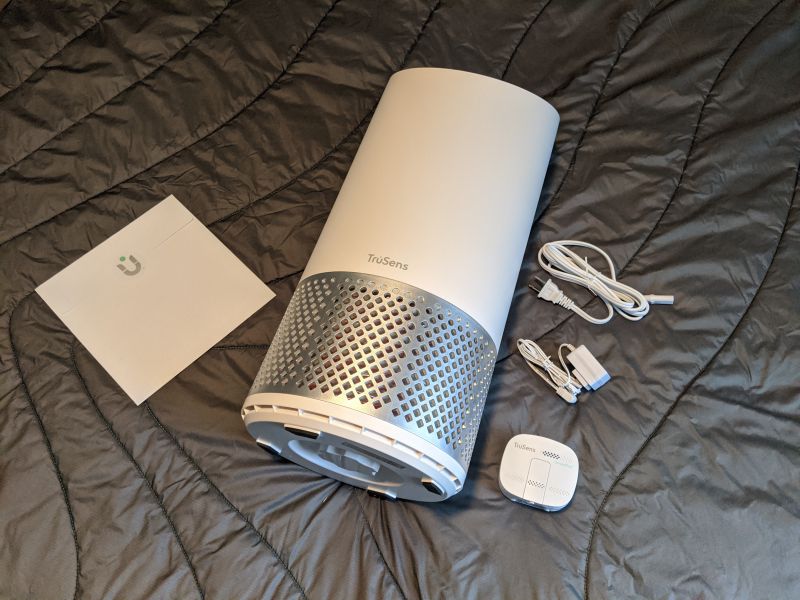
What’s in the box?
- TruSens Air Purifier
- SensorPod Air Quality Monitor
- Air Purifier power cord
- SensorPod power cord
- Instruction Manual
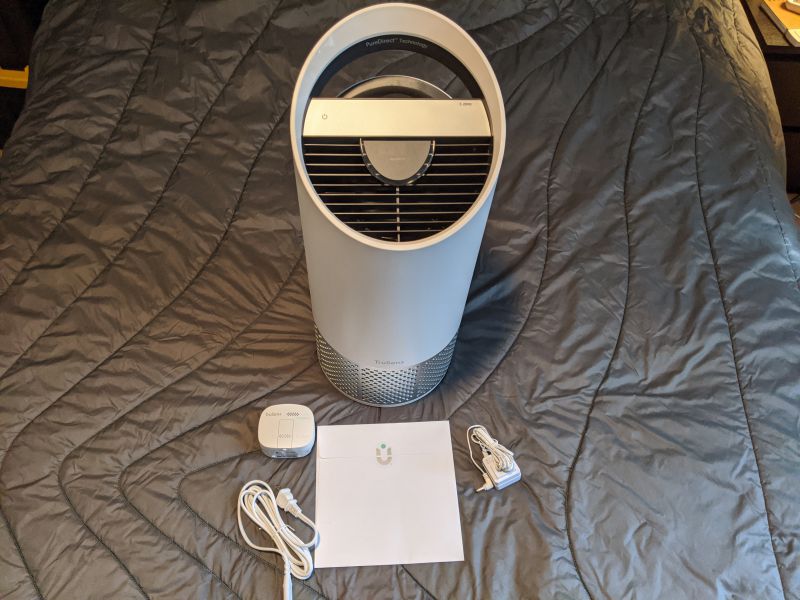
Hardware specs
- Room Coverage: 375 sq ft / 35 sq m
- AQI Indicator: Numeric & Color Display
- Purification Levels: Washable Prefilter, Carbon Filter, HEPA Type Filter, UV
- Fan Speeds: 4
- Auto Mode: Yes
- Night Mode: Yes
- Timer Settings: 2/4/8/12 hours
- Filter Change Indicator Type: Carbon, HEPA, UV
- Dimensions: 8 x 8 x 22 in (223 x 223 x 567 mm)
- Watts: 28
- Noise Level: 33 – 64 dB
- Weight: 8.8 lbs / 4 kg
- Warranty: 2 years
- Hertz: 60
- Volts: 120
Design and features
I really like the design of the TruSens. The arch on top of the unit looks great and functions as a carrying handle as well.
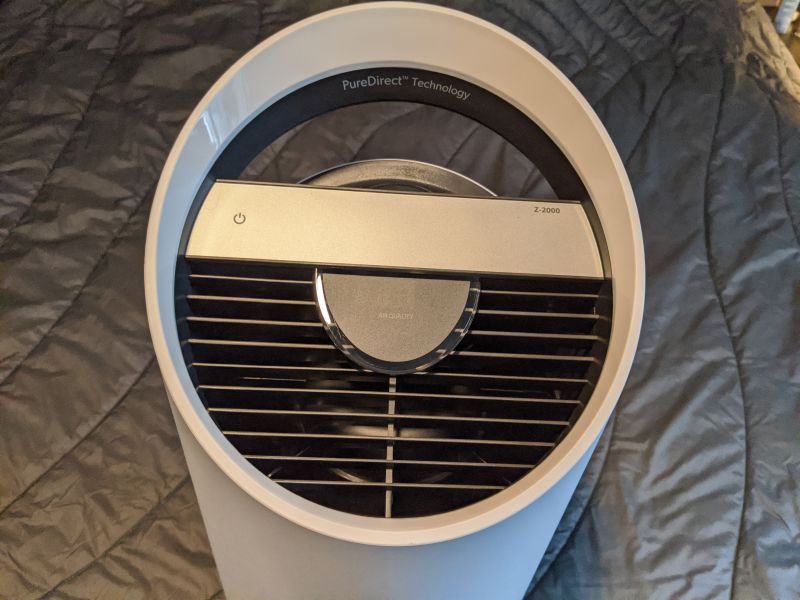
As opposed to most box-type air purifiers, the stylish and cylindrical TruSens will fit right in with any modern decor.
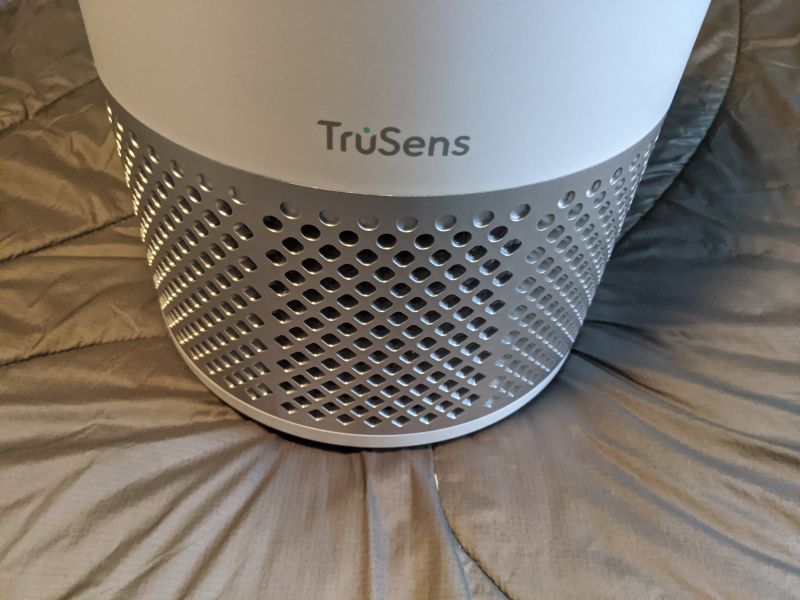
The intake vent at the bottom of the unit looks like it’s aluminum, but it’s just textured plastic.
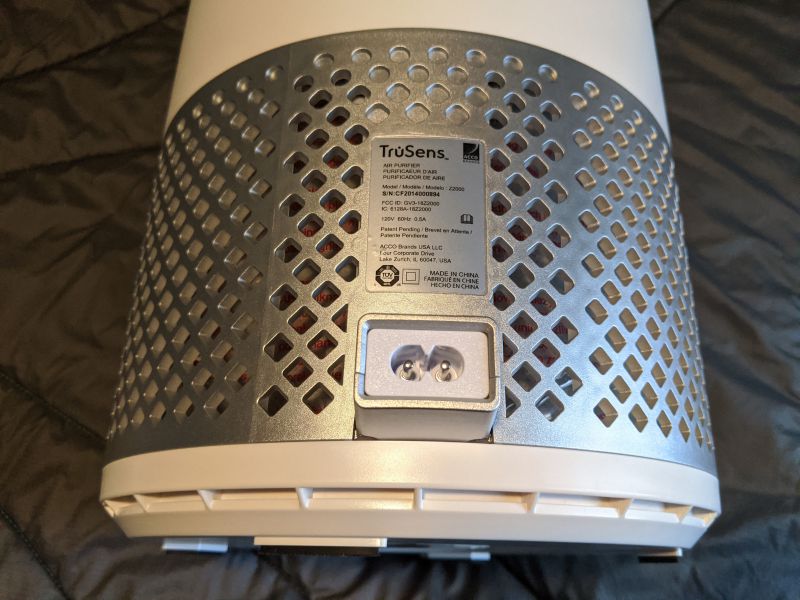
Underneath the Trusens is a knob which releases the filter drum for replacement or cleaning.

Before using the TruSens for the first time, unscrew the knob, pull out the filter drum, and remove the plastic bag covering the filter.
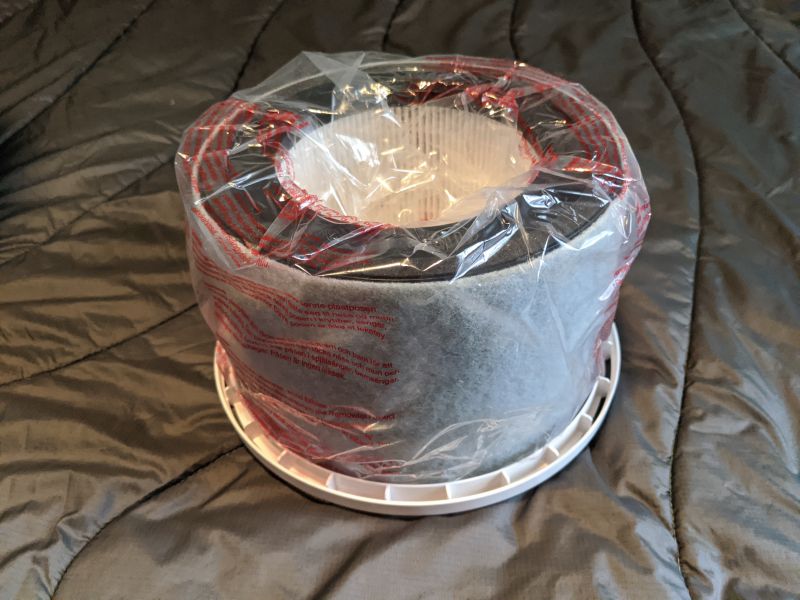
The filter is a 3-in-1 system made up of a washable prefilter, a carbon filter, and a HEPA Type filter. The key thing to make note of here is that this unit has a HEPA Type filter as opposed to a True HEPA filter. The difference between the two can be a significant distinction for some people. A HEPA Type filter is 99% effective at capturing particles as small as 2 microns, while a True HEPA filter has a 99.97% efficiency rate at capturing particles as small as 0.3 microns. It’s worth noting that the larger version of this unit, the TruSens Z-3000 priced at $349, does come with a True HEPA filter.
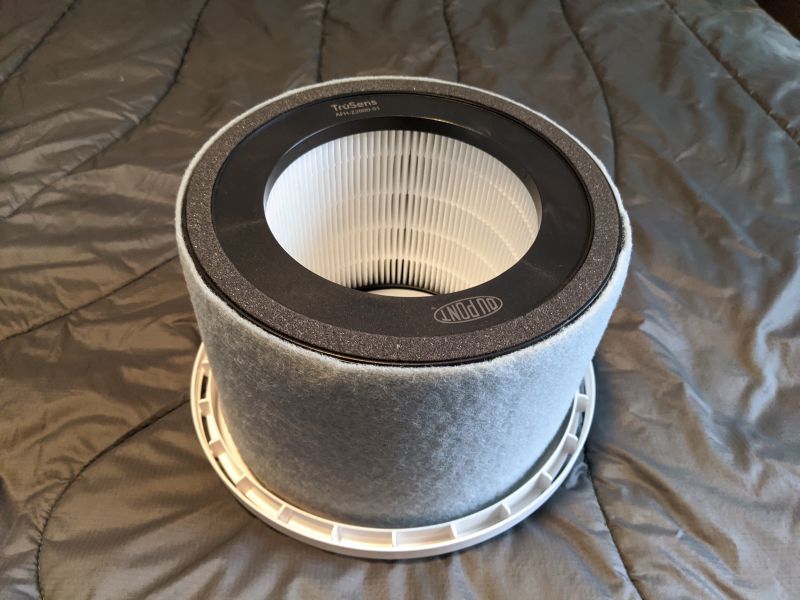
As for filter maintenance, the outer prefilter can be removed and washed while the interior carbon and HEPA Type filter, along with the UV bulb, need to be replaced when the unit indicates.
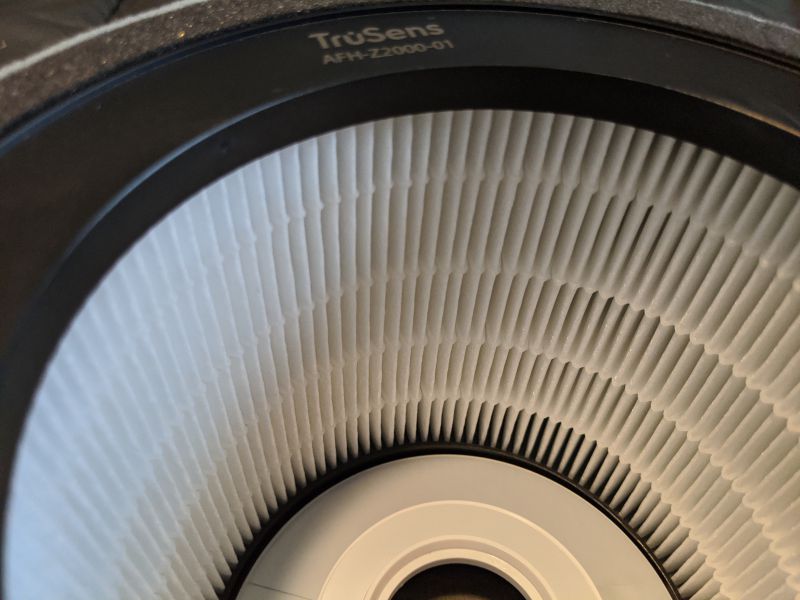
Plan on replacing the carbon filter every three to four months, the HEPA Type filter every twelve to fifteen months, and the interior UV bulb every one to three years.
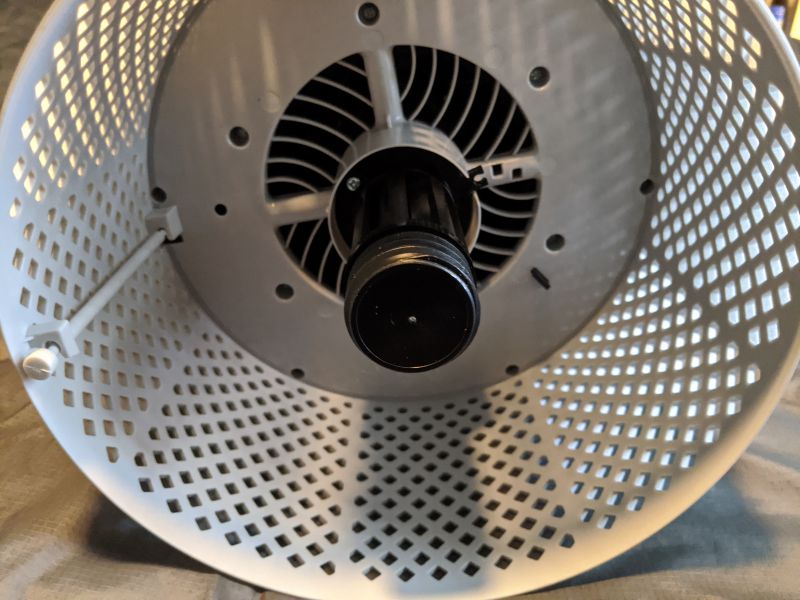
The UV bulb lives inside the hub that the filter drum connects to.
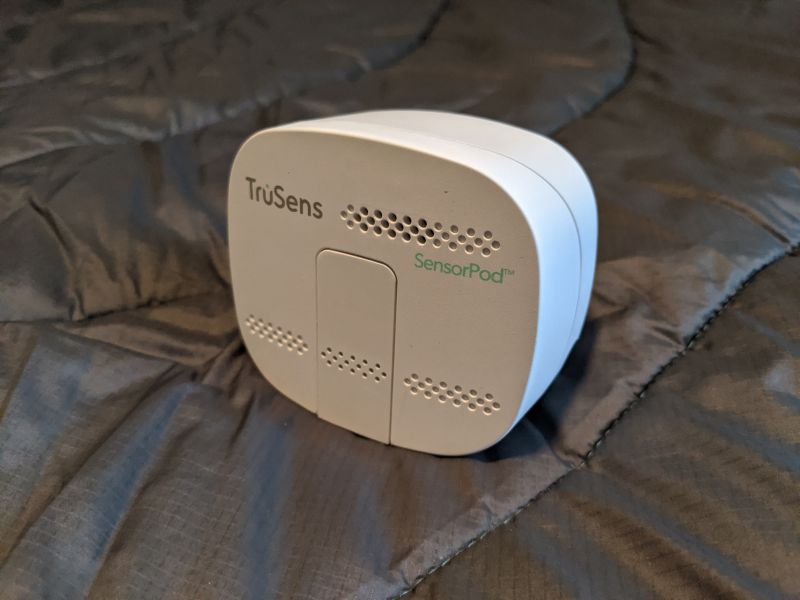
The real hero of the Trusens is the SensorPod. The SensorPod should be placed across the room in sight of the TruSens.
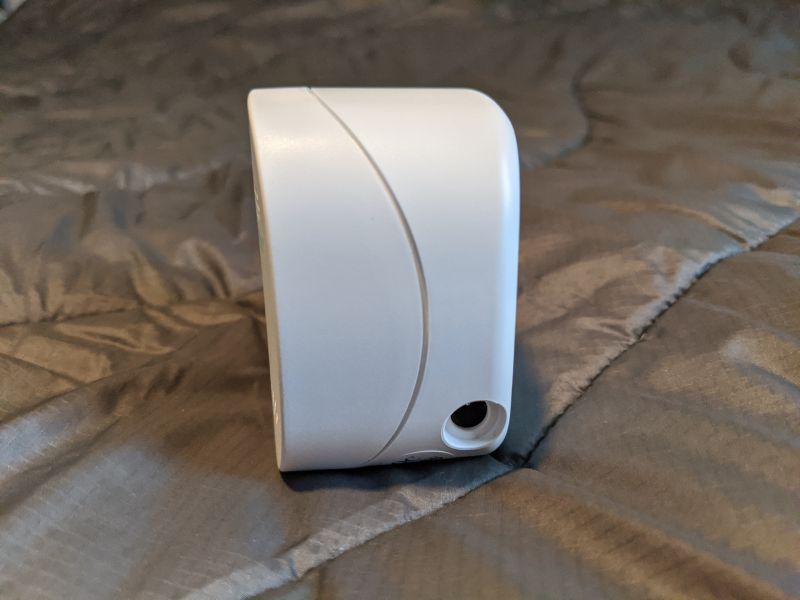
The SensorPod has its own power cord and can be placed up to 49 feet away from the main unit. The reason I like this so much is that the TruSens works to clean the air in your room using the quality measured at the SensorPod’s location as opposed to the quality of the air surrounding the purifier itself, which is how most lower priced units function.
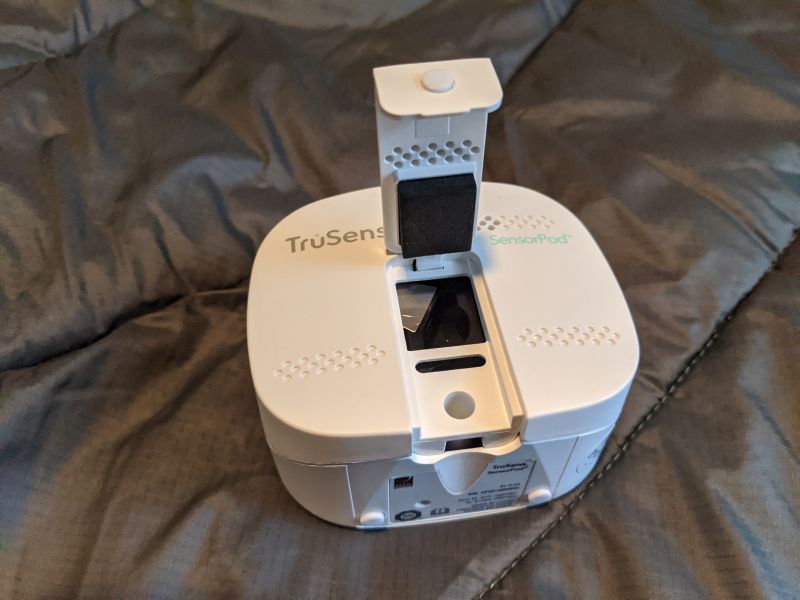
The SensorPod uses an infrared light to detect particulate matter and it should be cleaned every one to two months to remove any dust or particles that may affect the accuracy of the readings.
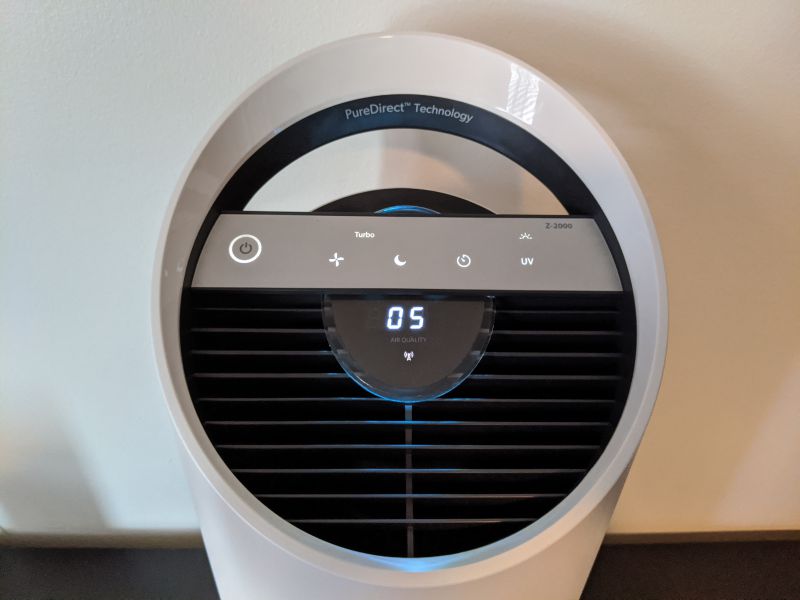
The TruSens has several settings and indicators on its touch control panel to convey operational information. The power button has a white light around it even when the unit is powered off, a feature I appreciated each night in my dimly lit bedroom. Once turned on, you’re greeted with a delightful little chime as the TruSens cycles through its indicator colors. There are buttons for fan speed, dimming the indicator lights, setting a timer, and toggling the UV light. There is also a light which will let you know when a filter or the UV light needs to be changed. Below the touch panel is the air quality indicator along with a light displaying the connection status of the SensorPod. All of these lights are quite bright in a dark room, so I made great use of the dimming button.
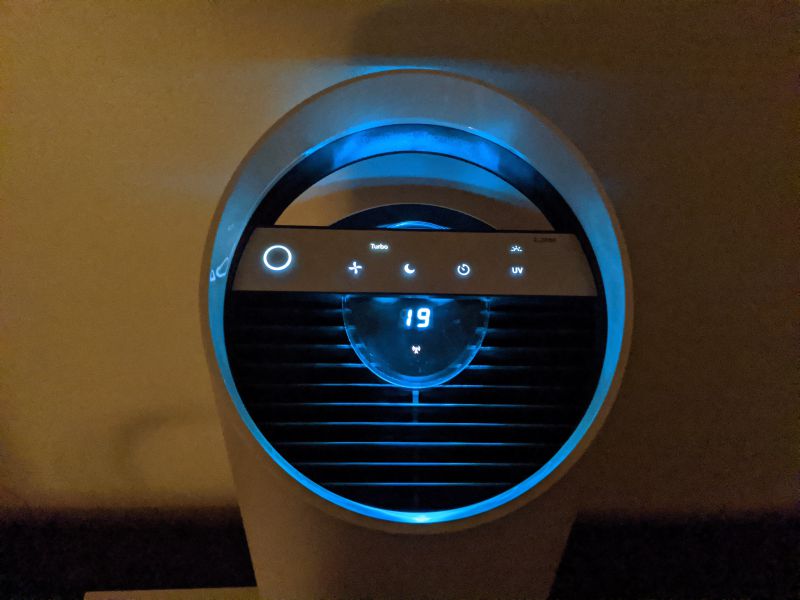
I was very surprised to find that the high-priced TruSens did not come with a remote control. A remote is pretty standard for most air purifiers and many nights I cursed the lack of one as I stumbled out of bed to change the fan speed or dim the lights if I had forgotten to do so initially.
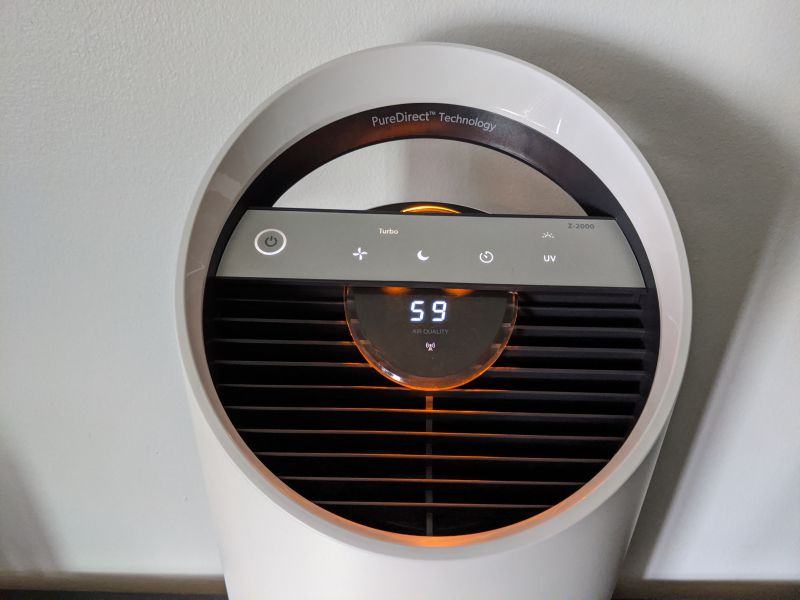
Performance
After the unboxing, I was excited to put the TruSens to work. The air quality in my apartment always seems to agitate my allergies, even when allergy season passes. My previous air purifier was only able to tell me if the quality of the air surrounding the unit was good, fair, or poor, but I never really trusted it. The TruSens was able to give me a much clearer picture of the quality of air I was breathing.
The TruSens uses a three tiered system, like my older unit, but TruSens augments that system with a 1-500 air quality rating. Good air quality is indicated with a blue light and a score of 0-50. Moderate air quality is indicated with a orange light and a score of 50-100. Poor air quality is indicated with a red light and a score of 100-500.
Over the weeks that I tested the TruSens, I watched the air quality in my living area go from a pretty good 19, all the way up to a scary 143. Mostly this was due to the smoke from wildfires burning in Oregon, California, and my home state of Seattle.
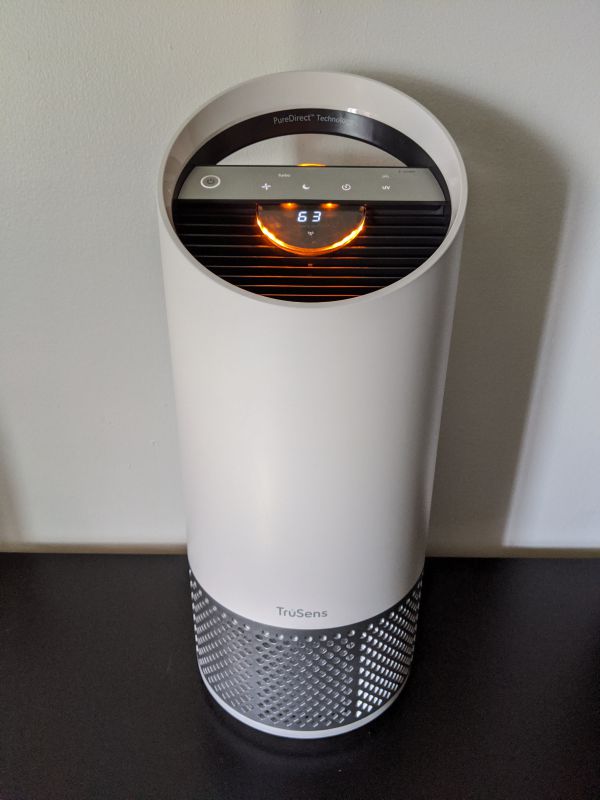
The good in all of this was watching the TruSens lower the scary initial readings significantly when I employed it in my bedroom nightly with both the windows and doors securely closed.
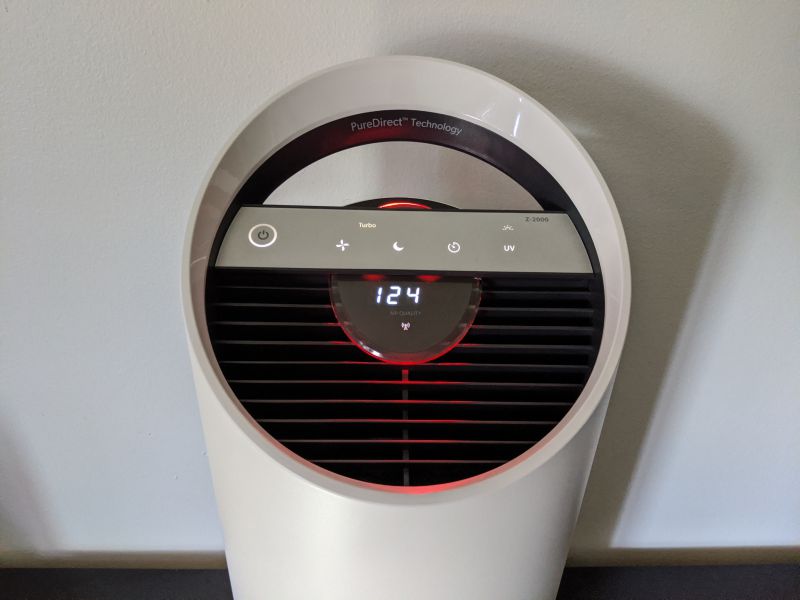
I went from tossing and turning every night and waking up with itchy, burning eyes to sleeping the whole night through and meeting the morning clear-eyed and uncongested.
When left in Auto mode, it was comforting to hear the TruSens powering the fan up when the air quality was poor and then powering down once it was at an acceptable level. I noticed over the weeks that the starting level of air quality was a little better every day, save for a few days when the air quality outside was at its absolute worst. For a data lover like myself, having a clear number assigned to the air quality of my living space and then watching, and physically feeling, that number improve over time was very reassuring and justified the higher price point of the TruSens.
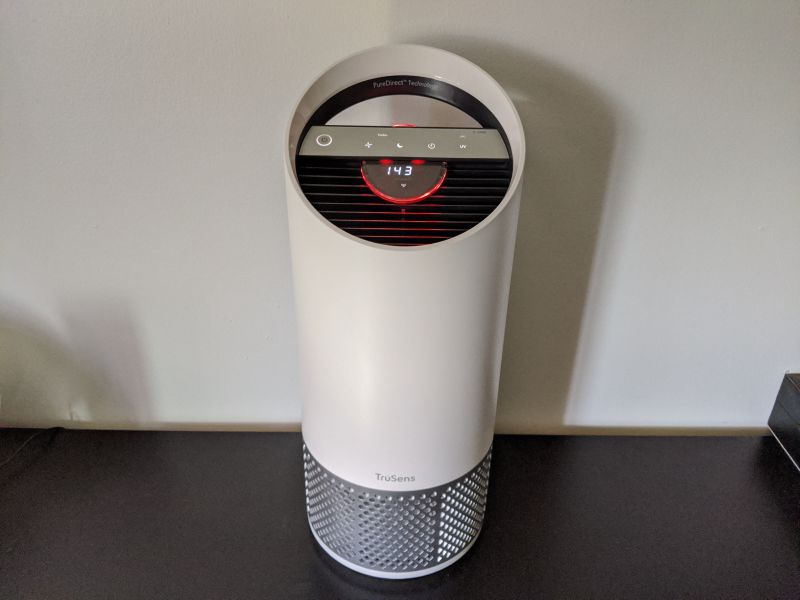
What I like
- Sleek design
- Easy to clean and use
- Remote air quality monitor
What needs to be improved
- Pricey
- Should come with a remote
- Need to replace two filters and UV light at certain intervals
Final thoughts
I really like the TruSens Z-2000 and it has become a permanent fixture in my apartment. The SensorPod is very effective at letting me know the quality of the air where I am, as opposed to where the TruSens is located. The controls are easy to understand and the display is great at letting me know how hard the unit is working. I physically felt and slept better after using the TruSens in my bedroom for a few weeks. At $249, the TruSens is priced high, and I think at this price it should definitely come with a remote control. Based on its performance though, even without the remote, the TruSens Z-2000 is a great buy considering its 3-in-1 filter, SensorPod, and UV light all working hard to keep your air free of impurities and contaminants.
Price: $249.00
Where to buy: TruSens and Amazon
Source: The sample of this product was provided by TruSens.



Gadgeteer Comment Policy - Please read before commenting
Your photograph of the sensor pod shows it open – I cannot open my sensor pod?